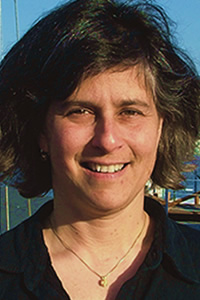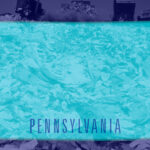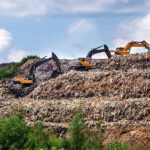
Sally Brown
BioCycle May 2015
This column is all about career advice for young up and coming people with a concern for the environment and political stability and a fondness for hot showers. It applies to those with no fear of equations but who shudder at the thought of talking to people as well as to those who cringe at the thought of multiplication but wouldn’t hesitate to talk to strangers. My one word here is not “plastics” as was told to Ben (aka Dustin Hoffman) in the Graduate, but “water.” If Ben and Elaine actually made it and had the fortune to have kids who would likely now have kids — this is what I would tell them. We need to reinvent how we get and use our water in the very near future both within the U.S. and across the globe. The threat of water shortages has the very real potential to change our cities, economy and impact societal stability. Talk about opportunity!
Start with job opportunities in the U.S. Let’s take a look at our current water system. Our water infrastructure was typically built more than a hundred years ago. There were very few shades of grey back then — at least as far as water was concerned. Water came in two varieties: Clean and clean here means you can drink it, and dirty and dirty means dirty enough that it has to be treated by trained officials in centralized facilities. In other words, our system is designed so that we use water treated to potable standards in and around our homes, whether we are drinking it or using it to wash the car. There is typically no distinction for dirty water, whether we are using it to flush a toilet or if it comes off our roof during a rainstorm. This model has served us well in many respects. You can drink from the hose when you wash the car and rates of water borne illness in the U.S. are minute in comparison both to what they used to be before our current infrastructure was built and to the situation in most of the rest of the world. So why change a good thing you might ask.
Why Change?
Two big reasons: Our world is changing and our infrastructure is falling apart. Two of the assumptions that guided the construction of our current water infrastructure no longer hold true. Energy and water are not available in limitless quantities. Bringing water long distances was one solution that enabled Los Angeles to expand. Carrying water over long distances requires a lot of energy. A recent study of electricity use related to water in the Western States (Tidwell et al., 2013) found that power to move water in most Western states runs about one percent of total electrical use. In Arizona, moving water uses 6 to 9 percent of the power and in California it constitutes 3 percent of total use. In fact, most of the states included in this study use 5 percent or more of their electricity to provide or clean water.
Changing precipitation patterns also have raised the question of whether the long-term conveyance plan will even hold up. Look at snowpack (or the lack thereof) in the Sierra Nevadas this year if you want an example. The Southwest is expected to get drier and even in areas where the annual rainfall is not predicted to change, the rainfall patterns are. For example, the frequency of high intensity storms in New England has increased by 67 percent from 1958 to 2007 (Karl et al., 2008). This is the most dramatic but increases in these types of events are common across the country. The rain is also falling more in the spring, fall and winter and less in the summer when it is needed by crops. This increases runoff, risk of flooding and drought potential all at the same time.
As our population has grown the strains on our water supply have also grown. Not only are there more of us, many of us have relocated to regions where the sun may shine but the rain doesn’t fall. Of the total U.S. population (about 320.5 million), about a third live in water stressed areas. California (38.5 million), Arizona (6.7 million), Nevada (2.8 million), and Texas (26.5 million) all figure prominently on the U.S. Drought Monitor map (link in online version, biocycle.net). Most sun-loving folks live in urban areas near coasts. Higher concentrations of people in urban drought prone areas make these areas vulnerable to water shortages.
Where Art Thou, Water Jobs?
So how do we continue to provide water for a growing population, increasingly located in large cities in drought prone areas with changing precipitation patterns, an increased understanding of the ramifications of high-energy use, and climate change? Oh, and I forgot to mention that we are also starting to understand the critical importance of water for a range of ecosystem services. So at the same time we need water for the people we also need water for the trees and streams. And then there is the question of agriculture. Most of our water is used to grow crops. So we need enough water for people to eat and drink while simultaneously keeping our streams clean and healthy and not depleting our groundwater. Talk about opportunity!
A range of options may come into play here. Our centralized distribution network is crumbling due to age and lack of infrastructure investment. Those technologically minded can easily make a career of figuring out how to apply new technologies such as sensors, new materials and computer technology to identify leaks and optimize distribution and collection. And are centralized systems really the best approach? There are job options for those quantitative types who can work on the development and reliability of decentralized systems. Is it possible to treat water locally or at least partially treat it locally? Can we treat water partially by relying on natural systems — the booming so called green infrastructure?
And what about dividing water into more than just black and white. Does storm water collection and integration have a role? Can much of the water we use in homes be supplied by roof collectors? Does our shower water need to meet potable standards? Here social types, political types and technical types need apply. Changing our regulatory structure and making people who are used to all potable all the time is a challenging task.
And then there is finding new sources of water. Is desalinization the right way to go? Energy costs have come down but desalinization is still very expensive and there is a resulting issue of brine disposal. Finally, how about recycled water? Here there is the potential for lightly used water to be used directly for outdoor irrigation. There is also the potential for dirty water to be cleaned and used for a wide range of uses including putting in your glass with some ice. That again will require a broad range of skills to turn into an everyday reality.
If economics are your strong suit, figuring out how to make local and state governments, perhaps even the feds, ready and willing to make large-scale investments in water will be a huge issue. Finding the right mix for ratepayers is yet another part of that equation. Lastly for those with an environmental bent, how to keep urban and agricultural waters clean and flowing is another challenge. A recent study put a dollar value on reusing treated water for streamflow augmentation and found it to be a profitable investment (Halaburka et al., 2013).
You can see that the career possibilities here are endless. And that is just for those who are happy to stay in the U.S. You look outside the U.S. and the challenges increase by orders of magnitude. Here you are talking about vast populations that have no or very poor infrastructure for clean water distribution or dirty water treatment. Drought has already been a factor in political instability. The current crisis in Syria was preceded by several years of drought (link in online version, biocycle.net).
I read in the New York Times that many neighborhoods in São Paulo, a city of 11.2 million are running out of water. The political will to fix a very leaky system (up to 40% of the water is lost in transport) or confront the issue head on is lacking. And shortly thereafter I read about the impending water shortage in Pakistan, a nation not known for stability even without widespread drought.
So like I said, whatever your skill set, wherever you want to live, my one word of advice for you is “water.” These are very exciting times, filled with opportunity. I find that that is the best way to look at it. If you start to think about the flip side, the potential for catastrophe, you’ll be losing a lot of sleep for a long time.
Sally Brown is a Research Associate Professor at the University of Washington in Seattle and a member of BioCycle’s Editorial Board.












